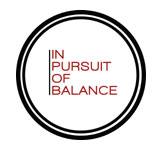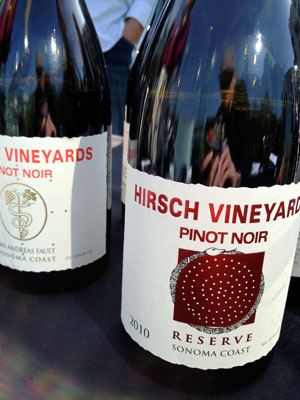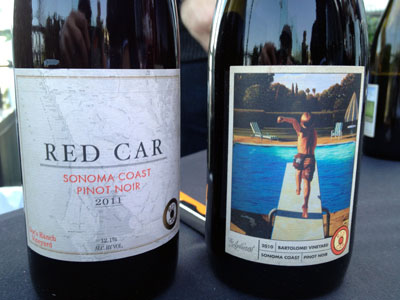 I love California wine and I'm not afraid to admit it. More than any other region and, through extensive wine classes, I've tasted them all. And I'm tired of people (OK, mostly other writers) bashing the wines from my adopted state for being what they mostly can't help being - big, bold and some claim overly-alcoholic. We have sun here, a lot of it, and it shows in the wines we make. That's called "terroir" people. If you don't like it, there are now hundreds of thousands of choices from almost every country in the world. Take your pick. Stop complaining and drink what you like.
I love California wine and I'm not afraid to admit it. More than any other region and, through extensive wine classes, I've tasted them all. And I'm tired of people (OK, mostly other writers) bashing the wines from my adopted state for being what they mostly can't help being - big, bold and some claim overly-alcoholic. We have sun here, a lot of it, and it shows in the wines we make. That's called "terroir" people. If you don't like it, there are now hundreds of thousands of choices from almost every country in the world. Take your pick. Stop complaining and drink what you like.
Personally, I like to taste more fruit than dirt in my glass so I'm perfectly content right where I am. Can I agree that California produces a preponderance of wines that show little character and that bludgeon your taste buds with too much of everything? Sure. On the flip side, low alcohol wines can be thin, insipid and too acidic all in the cause of being opposite. Having travelled up and down the state, I know there are many, many, many winemakers out there trying to make the best wines from their land (or purchased grapes) that focus on all the right things: balance, fruit and complexity.
That's all I ask for. Depth of character. Whether light-bodied or full-throttled, taste like something other than grape juice and oak. Subtle doesn't have to mean boring and intensity isn't always overwhelming. Balance is the key. It certainly begins in the vineyard with a myriad of farming decisions, but actions in the winery also play an important role. When the right winemaker finds the right grapes, it is magic in the glass. This idea became In Pursuit of Balance, a movement created three years ago by Jasmine Hirsch of Hirsch Vineyards and Rajat Parr of Michael Mina and Sandhi Wines to support wineries striving to craft balanced Pinot Noir and Chardonnay in California. I'm not sure this concept really needs a "movement", but I found a lot to love at their recent tasting in Los Angeles.
Both these varieties have certainly suffered from overblown styles in the past few decades that failed to capture, and sometimes downright subjugated, the inherent natures of these grapes. The producers featured at the event are on the forefront of the renaissance of these grapes, bringing down the amplitude and their intervention to allow the marriage of location and varietal to shine. This is about making the best wine possible using technique, experience and place.
 I was so anti-California Chardonnay I would rather drink water than choke down one of the usual oak bombs found on most wine lists. Apparently I wasn't alone. The Anything-But-Chardonnay backlash of the mid-90s sent many winemakers scurrying to make all stainless-steel versions to appeal to people like me; however, following fashion is not the way to go about crafting great wine. You need a clear vision and the right grapes to see it through. There is a new wave of winemakers who have discovered not only the proper places to grow Chardonnay (it is a grape adaptable to many climates, but that doesn't mean it should be grown just anywhere), but also the way to incorporate oak to enhance the grapes flavors instead of trounce all over them.
I was so anti-California Chardonnay I would rather drink water than choke down one of the usual oak bombs found on most wine lists. Apparently I wasn't alone. The Anything-But-Chardonnay backlash of the mid-90s sent many winemakers scurrying to make all stainless-steel versions to appeal to people like me; however, following fashion is not the way to go about crafting great wine. You need a clear vision and the right grapes to see it through. There is a new wave of winemakers who have discovered not only the proper places to grow Chardonnay (it is a grape adaptable to many climates, but that doesn't mean it should be grown just anywhere), but also the way to incorporate oak to enhance the grapes flavors instead of trounce all over them.
I found Chardonnays with great complexity and flair in the wines of Ceritas (especially their 2011 Heitz Vineyard), 2011 Failla and 2011 Hirsch Vineyards Estate. All were made from vineyards on the Sonoma Coast, so clearly that region speaks to me, yet all were distinct and memorable. I wanted to smell them as much as drink them. Much like top versions from Burgundy, these are wines with class, personality, age-ability and will set you back a few dollars; however, they also make you think, as much as please the palate and that doesn't happen enough where California white wines are concerned. I'm still not sure I would fork over $50 plus dollars for a bottle of Chardonnay, but I would be hard pressed to share if someone happened to give one of these bottles to me.
In regards to Pinot Noir, the groups "Manifesto of Balance" focuses not only on how the wine is made, but on farming techniques and clonal selection as well. How much intervention from the winemaker in all aspects of the process is optimal to showcase their terroir? While the founders aren't hard-core naturalists when it comes to their process, I think the questions they are asking of themselves and the wine community in general is an attempt to find the fine line between craft and overt manipulation. I'm a Rhone girl at heart, but like all wine lovers, there is just something about a great Pinot that captures the imagination. I prefer mine on the "feminine", light-bodied side with more fruit than earth, but again it's the marriage of those elements that truly make Pinot sing.
Since I have more opportunity to taste in Southern California than Northern I decided to focus on the wineries from the Sonoma Coast, which I have to say is my favorite appellation, seconded by the Sta. Rita Hills. There's just something about their intense aromatics, bright fruit and crisp acidity that keeps me wanting more. Ross Cobb is the winemaker for both his own label Cobb Wines - where he sources from various Sonoma Coast vineyards including Rice Spivak, Emmaline Ann, Joy Road and Jack Hill - as well as Hirsch Vineyards, which is a rolling 72-acre estate just 3 miles from the Pacific on a 1500 foot bluff. I have rarely had so many pinots in one tasting that were so different, yet so appealing. His palate is right up my alley with just enough fruit, funk and finish to leave you pondering every layer while salivating for the next sip. They poured the 2008 vintage as they are ready to go and at $68 a piece are a serious commitment. However they are serious wines. I preferred the Emmaline Ann and Jack Hill as they had a bit more fruit and floral characteristics than the others.
 The Hirsch versions, which are also from the Sonoma Coast, show the same deft touch, yet their terrior clearly shone through. I loved the light and lively red fruit of the 2011 Bohan-Dillon and at $34 consider it a steal when it comes to Pinot. The 2010 estate "San Andreas Fault" was just too smokey/skunky/earthy for me. The perfect marriage of these two styles comes together in their 2010 Estate Reserve. Finesse and intensity with a finish that just wouldn't quit. At $85 it's worth every penny. If only you could get your hands on it.
The Hirsch versions, which are also from the Sonoma Coast, show the same deft touch, yet their terrior clearly shone through. I loved the light and lively red fruit of the 2011 Bohan-Dillon and at $34 consider it a steal when it comes to Pinot. The 2010 estate "San Andreas Fault" was just too smokey/skunky/earthy for me. The perfect marriage of these two styles comes together in their 2010 Estate Reserve. Finesse and intensity with a finish that just wouldn't quit. At $85 it's worth every penny. If only you could get your hands on it.
Other standouts from the day included the single-vineyard line-up from Drew Family Cellars from Mendocino County (with the 50% whole cluster 2011 Weir Vineyard ($42) still burned in my mind), the 2011 Failla "Keefer Vineyard" Sonoma Coast ($45) and the 2012 Red Car Rose of Pinot Noir ($22) and 2011 Red Car "Estate" Fort Ross-Seaview ($65). I've been a fan of Red Car's winemaker Carroll Kemp for years and it was very interesting talking to him about how his move north and daily work in the vineyard changed his approach in the winery. It makes total sense, but was a revelation for him nonetheless. There's something to be said for getting your hands dirty. Fans of his earlier, full-throttle efforts may be in for a surprise as his style evolves, but I can tell you there's nothing lacking in his wines, except perhaps the extra alcohol.
Compared to Europe, California is still in its infancy where quality winemaking is concerned and I think it's a good thing that organizations like this are forcing the wine community to actually take a step back and refocus on what's best instead of following fads and trying to appeal to the lowest common denominator. With decades now behind most regions, I think their paths are becoming more clear and defined and eventually groups like this will become obsolete. I just hope that clarity doesn't stifle the creativity and renegade spirit that has defined the California winemaker up to now. Restraint does not exactly equal balance.
Lisa Dinsmore is a writer, web programmer, movie and wine lover. She currently runs two review websites to share her passions: www.crazy4cinema.com and www.dailywinedispatch.com. She is also the Managing Editor of One for the Table.